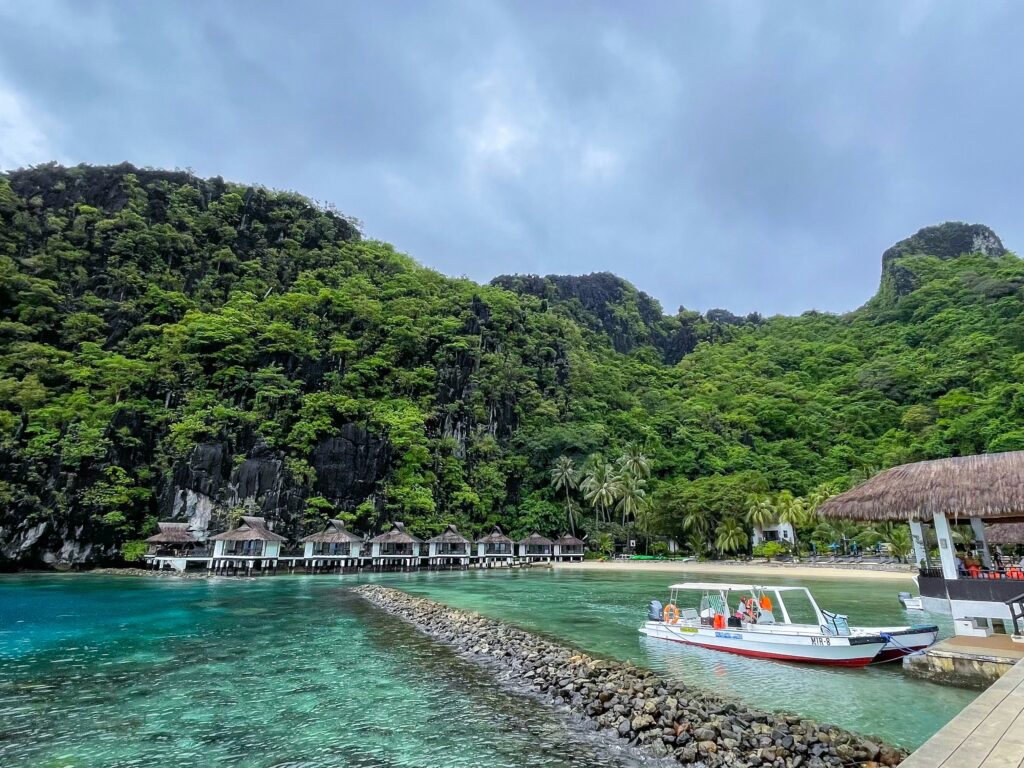Dive into the profound impact of rising sea levels on the coastline cities along where the Western United States meets the North Pacific Ocean. This article unveils the innovative strategies and unsinkable spirit of communities pioneering climate-resilient futures in the face of these transformative challenges.

PHOTO: Gustavo Zambelli on Unsplash
As the gentle waves kiss the shoreline, a storm is brewing beneath the tranquil surface. Our planet is undergoing a metamorphosis, and the rising tides are a testament to this change. With its picturesque beaches and vibrant communities, the coastline cities like California and Washington are at the forefront of this transformation.
This article delves into the impact of rising sea levels on coastline cities and explores the innovative strategies visionaries employ to build resilience.
Rising Sea Levels: A Threat to Iconic Landmarks and Coastal Communities

PHOTO: Maarten van den Heuvel on Unsplash
Iconic Landmarks at Risk
The western coastline in the United States is a treasure trove of natural beauty and cultural diversity. However, the rising sea levels, a consequence of climate change, threaten to erode the very foundations of these coastal cities. From the Golden Gate Bridge to the Santa Monica Pier, the iconic landmarks that have stood the test of time are now facing an unprecedented challenge.
Rate of Sea Level Rise Varies
Interestingly, the rate of sea level rise differs between the east and western seaboard of the United States due to various factors, including geological and oceanographic conditions. On the western seaboard, sea levels are increasing at a slower pace than the national average because the land is actually rising due to shifting tectonic plates.
However, the absolute water level height is higher along the western seaboard of the United States than the east. This slower rate of sea level rise on the western seaboard should not be seen as a reprieve, but rather as an opportunity to prepare and adapt.
San Francisco Faces Significant Threat
For instance, in San Francisco, sea levels have risen by approximately 8 inches over the past century, and projections indicate that it could increase by 36 inches by 2100. This poses a significant threat to the city’s infrastructure, including the iconic Golden Gate Bridge and the Embarcadero.
Los Angeles’ Venice Beach at Risk
Similarly, Los Angeles is not immune to the effects of rising sea levels. The city’s famed Venice Beach, known for its bohemian spirit and beautiful shoreline, is at risk of submerging. The economic impact is also significant, as the beach is a major tourist attraction and contributes substantially to the local economy.
Seattle Grapples with Rising Sea Levels
Further north, Seattle is also grappling with the effects of rising sea levels, with the city sinking 9 inches since 1989. The city is particularly vulnerable due to its extensive shoreline and reliance on ferries for transportation. The local government is actively working on strategies to mitigate the impact, including investing in flood barriers and sustainable urban planning.
The rising tides are not just a challenge but an opportunity for communities to come together and build a sustainable future. Through innovation, collaboration, and a commitment to sustainability, the USA can continue to thrive amidst the changing tides.
Submerging Shores: The Cost of Climate Change

PHOTO: Secret Travel Guide on Unsplash
Loss of Homes and Livelihoods
The submerging shores are not just a loss of land. They signify the loss of homes, livelihoods, and a rich cultural heritage. The communities that thrived along the coast for generations are now grappling with the reality of relocation and adaptation. The economic repercussions are equally daunting, with property damage and loss of tourism revenue.
In the picturesque town of Pacifica, California, the cliffs are eroding at an alarming rate, causing homes to teeter on the edge. The residents, many of whom have lived there for generations, face the heart-wrenching decision of whether to stay or leave their ancestral homes.
The economic impact is also significant. In 2019, the tourism industry in California generated approximately $145 billion in travel-related spending. With the rising sea levels threatening popular tourist destinations like Santa Monica and Malibu, this vital revenue stream is at risk.
Loss of Cultural Heritage
Moreover, the cultural heritage woven into these coastal communities’ fabric is invaluable. Indigenous tribes, such as the Quinault Indian Nation in Washington, have lived along the coast for centuries. The rising sea levels threaten their homes, sacred sites, and traditional ways of life.
Ecological Impact
Additionally, the ecological impact must be addressed. The coastal ecosystems, rich in biodiversity, are being altered and, in some cases, destroyed. This has far-reaching consequences for both the local communities and the environment.
Visionaries for a Resilient Future
Using Nature to Protect Our Coastlines
In the face of adversity, the human spirit remains unsinkable. Visionaries from various fields are coming together to pioneer climate-resilient infrastructure. From building sea walls to restoring natural barriers like wetlands, these innovators employ a multifaceted approach to safeguard the coastline cities.
One such visionary is Kate Orff, a landscape architect and founder of SCAPE, known for her work designing living shorelines. Her projects, such as the Living Breakwaters in New York, demonstrate how communities can use natural ecosystems to protect against storm surges and erosion.
Strengthening Seawalls to Protect Infrastructure
In San Francisco, the Embarcadero Seawall Program is a multi-billion-dollar effort to strengthen the city’s seawall against the rising tides. This initiative aims to protect critical infrastructure and historic landmarks while ensuring the city remains economically vibrant.
Innovative Solutions for Coastal Protection
Managed Retreat
Protection of the shoreline is not just about building barriers; it’s about creating a sustainable future. Innovative strategies such as managed retreat, where communities are systematically relocated to safer grounds, and living shorelines, which use natural habitats to protect the coast, are gaining traction.
In Washington State, the Quinault Indian Nation leads by example through its Taholah Village Relocation Master Plan. This plan involves moving the village to higher ground to protect it from sea-level rise and storm surges.
Amphibious Architecture
Another innovative approach is “amphibious architecture,” which allows buildings to float in the event of flooding. This concept is being explored in various parts of the world and could be a viable solution for coastal communities on the western seaboard of the United States.
Coastal Resilience: United Against Rising Seas of Climate Change
The rising seas are a global challenge that requires a united front. Communities, governments, and organizations must work together to build resilience. Education, awareness, and community engagement are critical in fostering a culture of sustainability. Together, we can turn the tide and ensure that the West Coast remains a beacon of hope and prosperity for future generations.
The Need for a United Front
For instance, the California Coastal Commission actively engages communities through its Local Coastal Program, which provides planning and funding to help coastal areas address sea-level rise. Moreover, grassroots movements such as the Surfrider Foundation are mobilizing citizens to take action in protecting and preserving the world’s oceans, waves, and beaches.
It’s Not Too Late to Do Something
The rising sea levels are not just statistics; they are a reality that the West Coast lives on daily. We can navigate these troubled waters through innovation, unity, and resilience. The coastline communities of the Western United States, with their unsinkable spirit, are poised to ride the waves of change and emerge more vital than ever.
Co-create with BillionBricks! As we develop our next house model, we are open to your ideas and feedback which we believe are essential to building a net-zero home that meets your needs and exceeds your expectations.
By booking a call with us, we’ll also share our own ideas and insights, and explore ways in which we can collaborate. Book a call with us now at https://calendly.com/d/y5t-wh7-hdd/call-with-billionbricks
References:
-
California Coastal Commission Official Website. Retrieved from https://www.coastal.ca.gov/.
-
Taholah Village Master Relocation Plan. Retrieved from http://www.quinaultindiannation.com/planning/projectinfo.html.
-
Embarcadero Seawell Program. Retrieved from https://sfport.com/wrp/embarcadero-seawall-program.
-
Quinault Indian Nation Official Website. Retrieved from http://www.quinaultindiannation.com/.
-
California Travel-Related Spend and Visitation Forecast. Retrieved from https://industry.visitcalifornia.com/research/travel-forecast.
-
USGS. Modeling Sea-Level Rise in San Francisco Bay Estuary. Retrieved from https://www.usgs.gov/centers/werc/science/modeling-sea-level-rise-san-francisco-bay-estuary.
-
SCAPE Studio. Kate Orff Profile. Retrieved from https://www.scapestudio.com/people/kate-orff/.
-
Seattle Times. What new projections of sea level rise mean for Puget Sound and the WA coast. Retrieved from https://www.seattletimes.com/seattle-news/environment/what-new-projections-of-sea-level-rise-mean-for-puget-sound-and-the-wa-coast/.
-
Surfrider Foundation Official Website. Retrieved from https://www.surfrider.org/.


